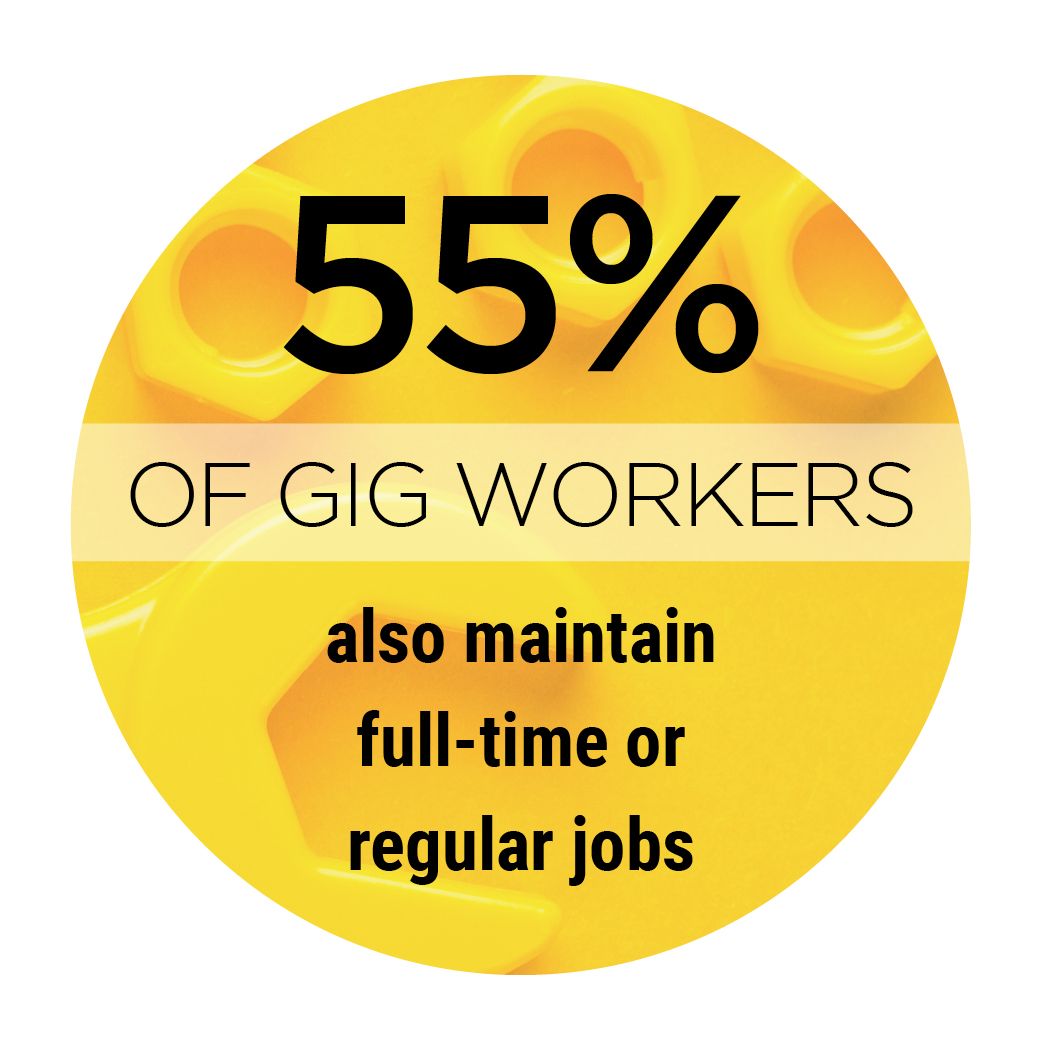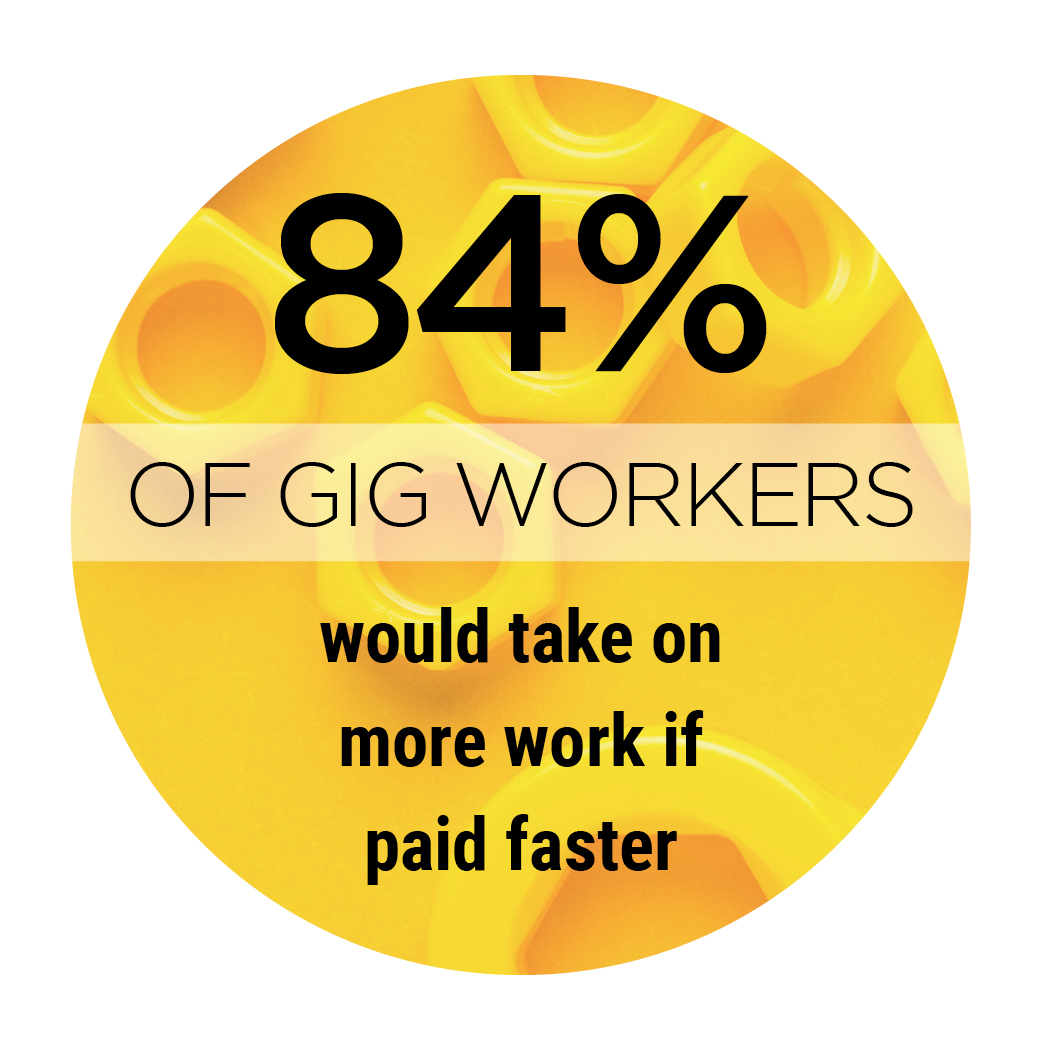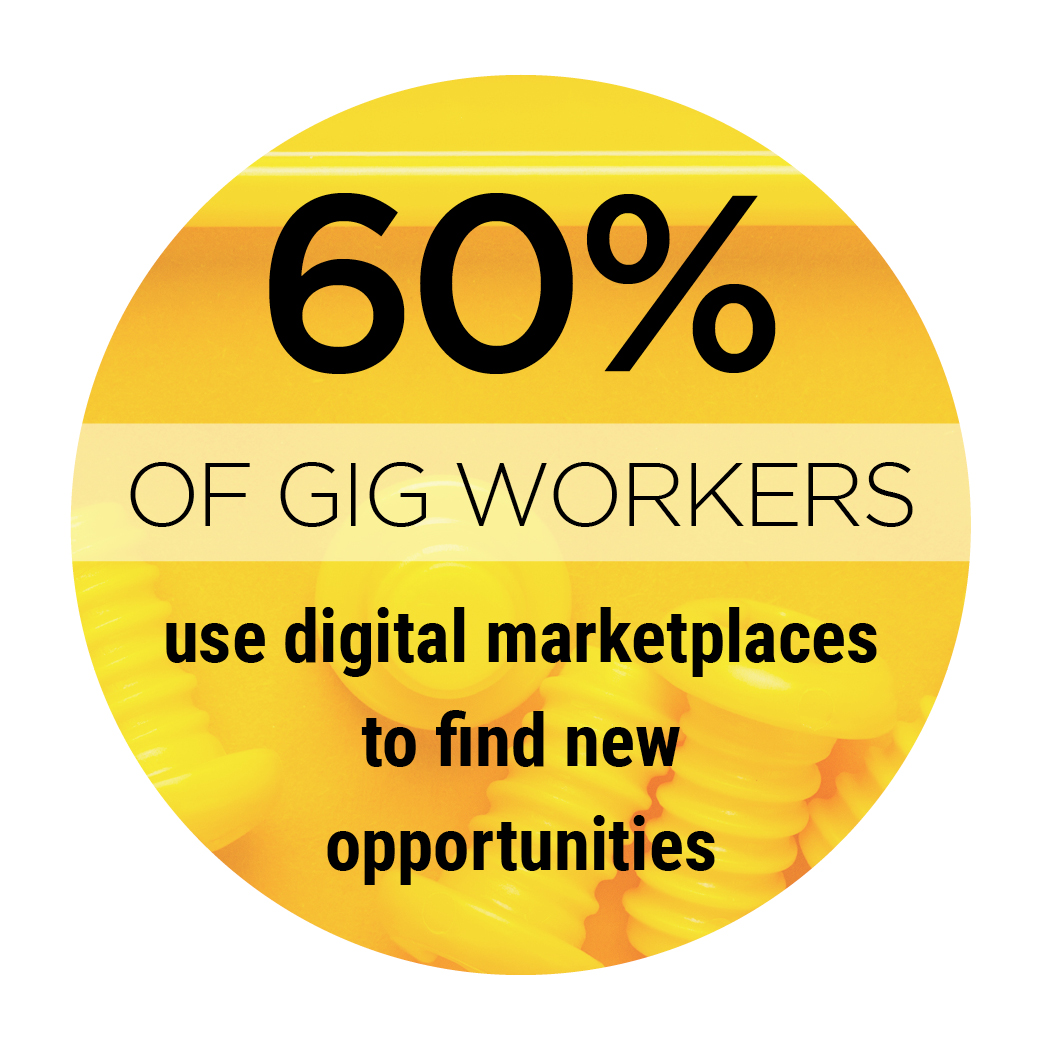NEW REPORT: Understanding The Long Tail Of The Gig Economy

Why the Gig Economy is Growing – and What’s Holding It Back
Gig workers and freelancers are a tiny minority no more. They are an important, and quickly expanding, portion of the American workforce, presenting workers with a potential new source of income and opportunity.
According to the Gig Economy Index™, nearly 40 percent of the American workforce now makes at least 40 percent of their income via gig work. What’s more, a growing majority of these workers (75.7 percent) say they would not leave freelance work behind for a full-time job, thanks in large part to the perks of gig employment, including flexibility, health benefits, supplemental incomes and creative fulfillment.
But while the modern gig economy is practically brimming with opportunities, many of these “gigs” are not what you might expect. Gig workers, increasingly, come from all walks of life – they are hairdressers, makeup artists, tutors and independent contractors in all sectors who help to keep the economy turning. There is more to this story than just Uber and Lyft.
Professionals of all skill levels and specialties are turning to the gig economy to enrich their careers. Some already have regular, full-time jobs, while some rely exclusively on gigs for their income. Others are unemployed and looking for a break. These disparate professionals have one thing in common: They believe the gig economy can provide them with something their careers otherwise lack.
But how are America’s freelancers finding new employers?
In this area, the internet is here to help. Gig workers are increasingly finding their next jobs online, where they can easily network not only with potential employers, but also with like-minded freelancers. In this way, workers of a multitude of professional backgrounds – including education, beauty, sports, construction and many others who make up the tail end of the American gig economy – are redefining professional success on their own terms.
For the latest Gig Economy Index™, the PYMNTS research team collected survey data on more than 2,000 of these American professionals who recently participated in this growing sector of the economy.
The results? Professionals of all ages stand to enjoy the benefits of the digital age, but only younger workers are flocking to take full advantage of this tool. Sixty-nine percent of workers between the ages of 18 and 24 use the internet in their job hunts, but only 42 percent of those over the age of 64 do the same.
Other key takeaways from the Gig Economy Index™ include:
- $1.4 trillion: Total collective annual earnings of American gig workers
- 60 percent: Share of gig workers who say they use the digital marketplace to find new opportunities
- 55 percent: Percentage of gig workers who also have a regular or full-time job
Our survey also sought to answer deeper, structural questions about what shapes the modern American gig economy. What entities are hiring gig workers? How do gig workers receive compensation? What channels do they use to find work? What can organizations seeking gig workers do to attract more employees?
Think Global, Act Global
Language barriers, geographical distance and currency conversion are just some of the factors that can hinder growth and opportunities for ad hoc workers and employers alike. To help ease the stress of cross-border dealings, Freelancer.com is taking measures to ensure gig workers are compensated for their work in a timely and efficient manner.
The company recently acquired the digital escrow provider, Escrow.com, to help institute a global, digital escrow account service designed to facilitate cross-border gig work and provide a backbone of trust to help deepen the relationship between gig workers and employers. For the Gig Economy Index feature story, PYMNTS held exclusive interviews with Sebastián Siseles, the international director of Freelancer.com, and Jackson Elsegood, general manager of Escrow.com, to get the inside scoop on their effort to offer escrow services dedicated to the gig economy.
“The gig economy back in 2010 might have been, ‘Design a website, and I’ll mail you a check. Hopefully, I’ll pay,” Elsegood elaborated. “That doesn’t fly anymore, the same way that a taxi doesn’t live up to the standards that Uber has now set. The expectation of the consumer is that I can order a taxi from my phone, and the expectation of a freelancer is they have absolute certainty they will be paid on a certain date, as quickly as possible.”
The answers to all these questions, and more, are explored in our latest Index report.
To download the Gig Economy Index™, a Hyperwallet collaboration, please fill out the form below.
About the Index
The Gig Economy Index™, a Hyperwallet collaboration, is designed to better understand workers in the gig economy, people who often work in short-term, ad hoc positions – who they are, what services they supply and what percentage of their overall income the gigs represent.
The Index features a survey of more than 2,000 people who have participated in the gig economy in the past three months. Findings identify five main gig worker personas, their payment methods and their goals, motives and satisfaction with freelancing. The Index further breaks down details such as age, gender, race, income, education, time spent in the gig economy and payment mechanisms.



